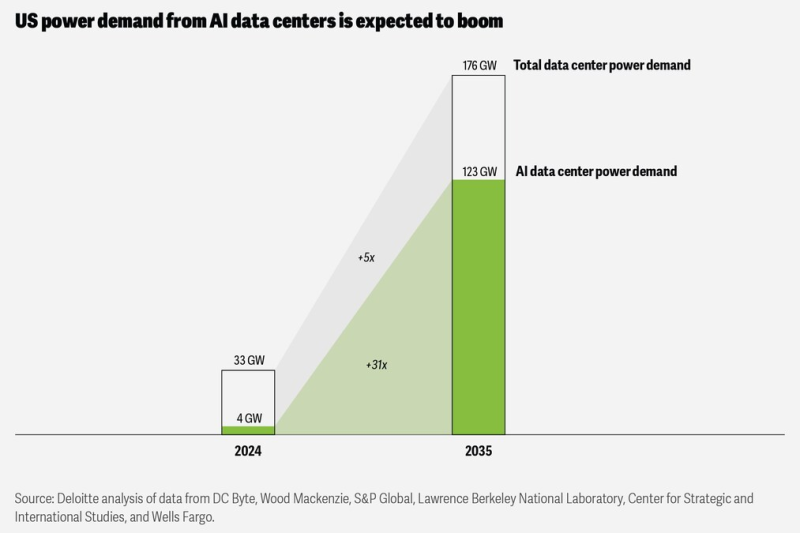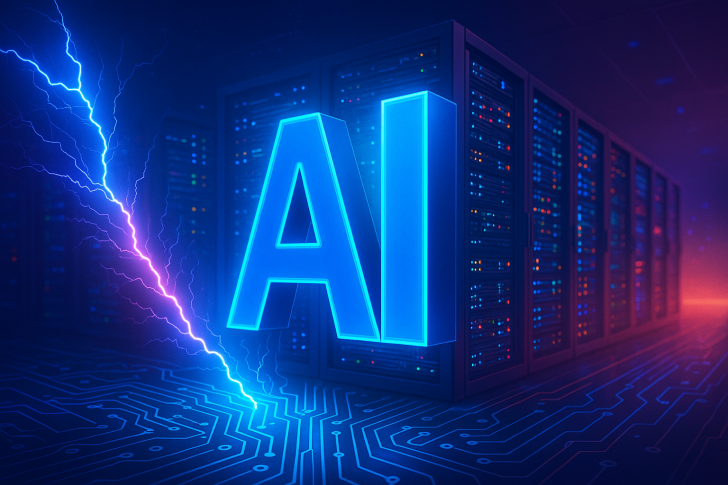⬤ The energy requirements for AI in the United States are about to go through the roof. Current AI workloads use around 4 gigawatts of power, but that number is projected to reach 123 gigawatts within the next decade. Overall data-center electricity consumption is following a similar trajectory, climbing from 33 gigawatts today to an estimated 176 gigawatts by 2035. The scale of this jump shows just how quickly AI deployment is outpacing the grid's ability to keep up. These figures come from multiple industry sources including DC Byte, Wood Mackenzie, S&P Global, Lawrence Berkeley National Laboratory, the Center for Strategic and International Studies, and Wells Fargo.

⬤ What's driving this surge is the explosive growth in AI model training and inference operations. Generative AI systems and large-scale computing clusters are consuming electricity at rates that were barely imaginable a few years ago. The 31-fold increase in AI-specific power demand dwarfs the fivefold rise in total data-center usage, meaning AI is becoming the dominant factor in future energy planning. This isn't just a technical challenge—it's reshaping how the entire tech sector thinks about infrastructure.
⬤ The real bottleneck isn't chips anymore, it's electricity. While everyone was focused on GPU shortages, the energy constraint has quietly become the bigger problem. Meeting this level of demand will require massive upgrades to power generation, transmission networks, and renewable energy capacity. Grid infrastructure that was designed for a different era now needs to handle loads that are growing faster than almost any historical precedent. Without serious investment in transmission lines and clean energy projects, AI expansion could hit a hard ceiling well before 2035.
⬤ This power crunch changes the game completely. Access to reliable electricity is becoming just as strategic as access to cutting-edge hardware. Firms that can lock down energy contracts, build out renewable generation, or modernize grid connections are positioning themselves to win in the next phase of AI development. The companies that solve the energy equation won't just enable AI growth—they'll control a critical chokepoint in the entire ecosystem.
 Saad Ullah
Saad Ullah

 Saad Ullah
Saad Ullah


